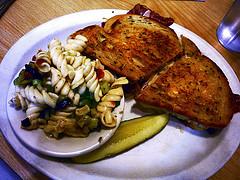Mar
21
2013
Strategy is a term that has its roots in ancient Greece. The word Strategos was the name used to designate the general or commander-in-Chief and Supreme military body. The concept as such not alluding to a verb, refers to an individual: the General, the Commander of military forces convened to resolve a conflict. Then, strategy is what basically makes the Strategos, his task. The General of armies, or leader in organizations, insofar as strategos or strategist, is expedient that know in depth the nature of the Organization, since it emerge the collective efforts and are presumed essential skills that determine good results, which refines and improves with knowledge and constant practice.
In the business world, strategy can be defined as the decision-making model that reveals the objectives or goals of the company, as well as essential plans to achieve them, so you define their competitive position, in response of what kind of business the company is or wants to be, and What kind of organization you want to be. In his book, the Strategos, and war in the world of business, Carlos Nava Condarco, Professor in politics and business strategy of the Bolivian Catholic University, lists four basic skills of a good strategist in the business field. First it places Control of emotions, understanding as such, control over itself which guarantees the personal control of situations and even control the context. Nothing more essential to a strategist, that knowledge and personal control, since a situation of strong conflict, the control of oneself, can become a terrible imbalance, analogous to that which might occur while trying to extinguish the flames with gasoline. If the Strategos has no ability to control if same then does not have the ability to control the conflict and nothing more has to be done in the logical strategic. Subsequently, places the memory, as fitness. Memory understood as knowledge accumulated by the experiences passes.
Comments Off on Bolivian Catholic University | posted in General
Mar
15
2013
It is also recommended wearing special stockings and tights. Heartburn Heartburn occurs in approximately 50% of women during pregnancy at any of its terms, but more often in the II and III trimester. Usually develops after a meal, especially after drinking copious oily, fried and spicy food. Lasts from minutes to hours, sometimes is repeated several times a day. First of all, it should be noted that for a long painful heartburn should consult a gastroenterologist. To him can you direct physician from the antenatal clinic.
Need to be confident that in this case, all the worry – not the symptoms of diseases of the digestive system, which gave itself felt only now, at the time of pregnancy. Solution. First of all pregnant women should be excluded from the diet of fatty, fried foods, coffee, strong tea and fizzy drinks. Must be fed small portions 5-6 times a day, at the same time. The diet to include milk and dairy products, lean meat, pureed vegetables. After the meal, it is recommended to stand or sit: in the position of the body is less likelihood of heartburn.
It is also recommended to drink alkaline mineral water. Heaviness in the stomach, belching. May be caused by the stagnation of bile, and therefore difficult digestion. And the longer term, the stronger the uterus presses on the bile ducts. In addition, during pregnancy, the load on liver increased two-fold. The solution of the following: to help the liver (and himself), for 20 minutes before a meal, take a pill No shpy, and after – or tablet motilium Hofitol.
Comments Off on Heartburn | tags: home and family, Pregnancy | posted in General
Mar
9
2013
 The history of sausage production is viewed through the millennia: the first mention found in the ancient chronicles of Babylon, the ancient Russia and Greece. In the Slavic people mention the sausage first appeared in the middle of the tenth century. The term "sausage" is derived the word from the Latin word 'bulb' (round) or a Jewish 'count Basar' (every kind of meat), or the Polish 'kielbasa'. The first workshop where the sausage made sausages, appeared at the end of XVII century in St. Petersburg, then in Moscow, Rostov-on-Don and other cities. In the early XX century, most large enterprises have been the central meat-processing plants. In the modern industrial production of known compositions and technology of several hundred sausages and meat products.
The history of sausage production is viewed through the millennia: the first mention found in the ancient chronicles of Babylon, the ancient Russia and Greece. In the Slavic people mention the sausage first appeared in the middle of the tenth century. The term "sausage" is derived the word from the Latin word 'bulb' (round) or a Jewish 'count Basar' (every kind of meat), or the Polish 'kielbasa'. The first workshop where the sausage made sausages, appeared at the end of XVII century in St. Petersburg, then in Moscow, Rostov-on-Don and other cities. In the early XX century, most large enterprises have been the central meat-processing plants. In the modern industrial production of known compositions and technology of several hundred sausages and meat products.
The most common are cooked: sausages, frankfurters and sausages, cooked and smoked, smoked, smoked and cured sausages, jellies and headcheese, blood sausages, meat loaves, liver sausage and pate. In the manufacture of sausages muscle necessarily separated from the bones and chop, while the production of salted products use whole pieces of meat and parts of the carcass. Raw meat production comes from the commodity compartment (slaughter house): fresh, chilled, frostbitten, frozen (different temperatures). The greatest nutritional value has fresh meat, but for use of the benefits of treatment is needed, because in 3-10 hours after slaughter characteristics of raw materials start to deteriorate rapidly. To extend the physical and chemical properties of meat using a mixture of spicy posolochnye. On physico-chemical and technological characteristics of chilled meat close to the pair, and organoleptic often surpasses it.
Comments Off on High-tech Production Of Sausages And Deli Meats | tags: Equipment, industry | posted in General

